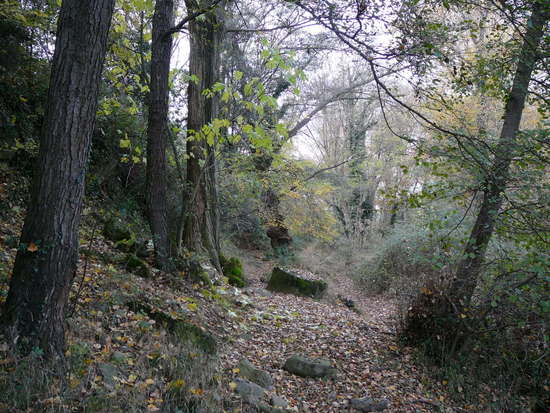
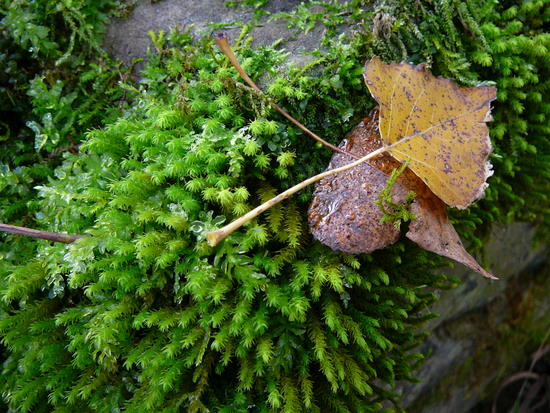
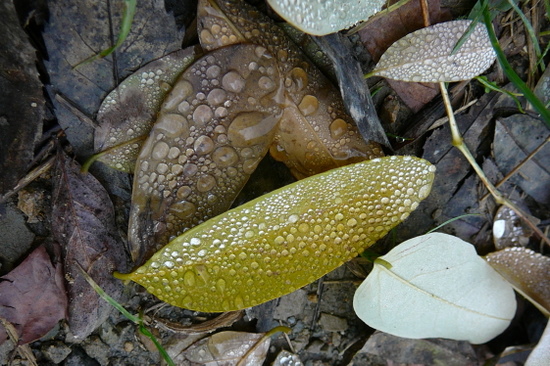




Every year by All Saints Day we remember the deceased and perhaps, just for an instant, think about death. A great deal all philosophy and religion is a meditation on death. In literature there is the recent Nothing to be frightened of by Julian Barnes.
Yes I do. To my family, to my friends, and people who have accepted me for being the person that I am. To the Sullivan and Hayden families, I do not come here with the intention to make myself out to be a person that I am not. I never claimed to be the best person. I am not the best father, the best son, or the best friend in the world. I did the best I could with what I had. I come with no hate in my heart or bitterness. To my family and to you people, I can only apologize for all the pain I caused you. May God forgive us on this day. I am ready when you are.
Yes. I just want to let you all know that I appreciate the love and support over the years. I will see you when you get there. Keep your heads up. To all the fellows on the Row, the same thing. Keep your head up and continue to fight. Same thing to all my pen friends and other friends, I love you all. I can taste it.
Uh, I don’t know, Um, I don’t know what to say. I don’t know. (pauses) I didn’t know anybody was there. Howdy.
A life long GPS track would provide information about where we have been every minute, the geographical coordinates of the places we have been living in, places we have travelled to. But we wouldn’t know whether, at that particular time we were in a creative mood, or on the contrary, crossing spaces of routine following the crowd, enjoying leisure or enduring hard work, interested in projects or bored, happy or depressed. Those would be coordinates to locate in a vital or emotional geography. It could be something like this:
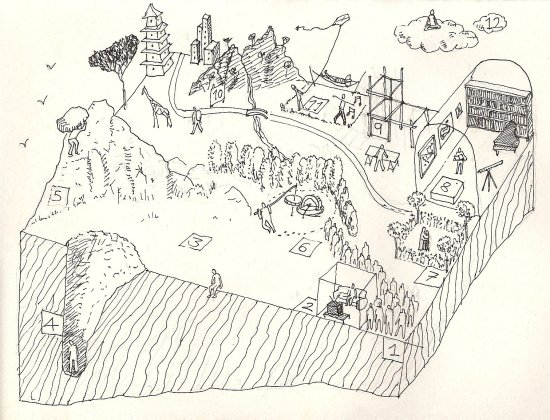
I have purchased a GPS so that I don’t get lost when I go trekking on my own. Now I could actually record the history of my feet. I imagine what would be if I had been recording it since I was born. I would have the track of all the places I have ever been: on my way to school, the playgrounds, visits to grandpa’s,
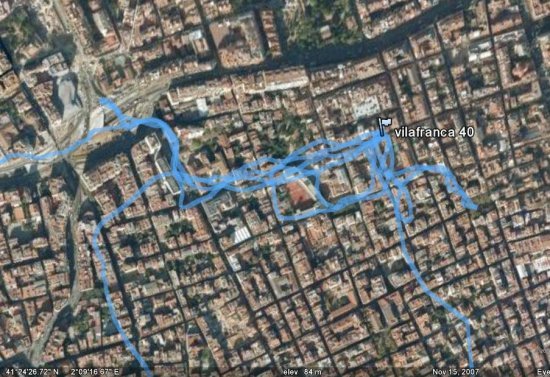
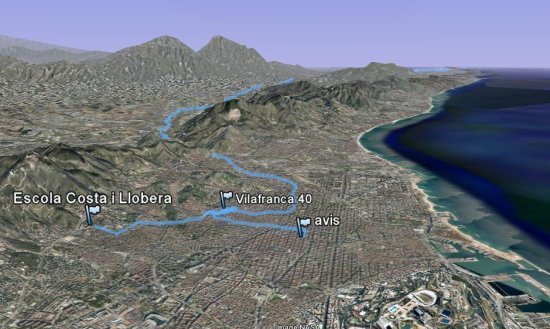
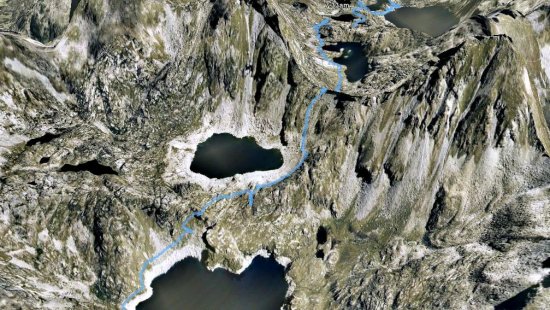

Soon after posting about my shoes I visited the exhibit about Ballard at CCCB in Barcelona, open until November 2nd, . Among many fascinating things there is the text “I believe” published in 1984 in the “Interzone” magazine. While reading it, I realized that I coincided with many items. When I reached “I believe in the story of my feet” I was about to shout “Me too!”. Somehow we are the story of where our feet have lead us.
If you go to see the exhibition, don’t miss the video installation ofAnn Lislegaard, just before leaving at right.
Here some excerpts; the highlights are mine.
I believe in the power of the imagination to remake the world, to release the truth within us, to hold back the night, to transcend death, to charm motorways, to ingratiate ourselves with birds, to enlist the confidences of madmen.
I believe in my own obsessions, in the beauty of the car crash, in the peace of the submerged forest, in the excitements of the deserted holiday beach, in the elegance of automobile graveyards, in the mystery of multi-storey car parks, in the poetry of abandoned hotels.
[…]
I believe in nothing.
[…]
I believe in Max Ernst, Delvaux, Dali, Titian, Goya, Leonardo, Vermeer, Chirico, Magritte, Redon, Duerer, Tanguy, the Facteur Cheval, the Watts Towers, Boecklin, Francis Bacon, and all the invisible artists within the psychiatric institutions of the planet.
[…]
I believe in the impossibility of existence, in the humor of mountains, in the absurdity of electromagnetism, in the farce of geometry, in the cruelty of arithmetic, in the murderous intent of logic.
[…]
I believe in the non-existence of the past, in the death of the future, and the infinite possibilities of the present.
I believe in the derangement of the senses: in Rimbaud, William Burroughs, Huysmans, Genet, Celine, Swift, Defoe, Carroll, Coleridge, Kafka.
[…]
I believe in the next five minutes.
I believe in the history of my feet.
I believe in migraines, the boredom of afternoons, the fear of calendars, the treachery of clocks.
I believe in anxiety, psychosis and despair.
[…]
I believe in Tokyo, Benidorm, La Grande Motte, Wake Island, Eniwetok, Dealey Plaza.
I believe in alcoholism, venereal disease, fever and exhaustion. I believe in pain. I believe in despair. I believe in all children.
[…]
I believe all mythologies, memories, lies, fantasies, evasions.
I believe in the mystery and melancholy of a hand, in the kindness of trees, in the wisdom of light.
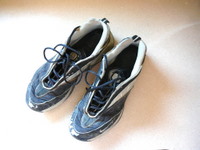 |
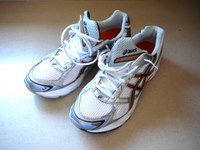 |
|
| I’ve bought a pair of new runners. The old ones, although they look ok, have the sole broken. I think about all the steps they have run, often along Poblenou beaches, in Barcelona, but also in London, Paris, Stockholm, Prague, Washington, Vienna. I’ve been very happy jogging with them. I wonder which new runs are waiting for me with those brand new. I think also in all the steps my feet have done since I was born. |
||
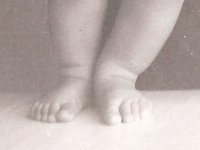 |
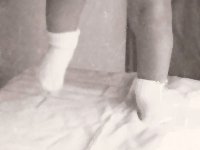 |
|
| First without shoes, or just bed socks, when I couldn’t stand up alone and depended on my parents or grandfathers arms to kick on a table or a stroller.. | ||
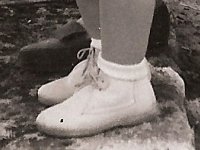 |
 |
|
| But soon I started walking and exploring the world around! I still have a great deal of that curiosity. With “Can Segarra” boots I went to school. Sometimes I would climb over the fence of a uninhabited garden trying to find insects. And I grew up. Other pairs of shoes took me to the university, marriage, the first trips, becoming father of two daughters and assisting them to their first steps also. |
||
 |
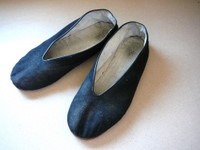 |
|
| Now, if I do an inventory of my shoes, I realize they draw a portrait of the life I lead. Those worn out at the left take me every day at work, riding a bike. Back home, a pair of Chinese slippers from Beijing welcome me. | ||
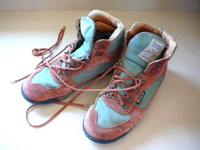 |
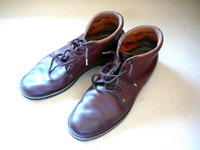 |
|
| Dear mountain boots! 12 years old, their first time was at Pica d’Estats. They have walked countless treks; done the Tour of Montblanc and climbed the Kilimanjaro. On the right, newer and just 4 years old, my companions in travels, from Japan to Neckar valley. | ||
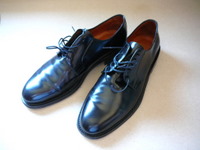 |
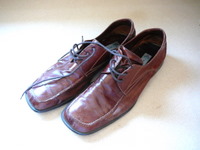 |
|
| Those are supposed to be my elegant shoes and they have done just a few km. They have been on opera house carpets; on the right for more informal occasions. | ||
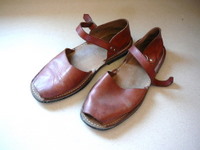 |
 |
|
| In summer, “abarques” for promenades and sandals for walking. | ||
 |
 |
|
| Those have never been very far away from home, just to the sea to paddle with my kayak; dry shoes in winter, flip flops in summer. | ||
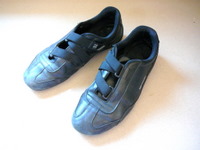 |
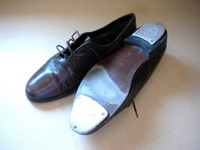 |
|
| The merriest: on the left the ones I use when dancing lindy hop; on the right the noisiest. When I wear them I know that I’m going to feel happy. | ||
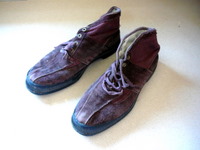 |
 |
|
| My collection shoes! Real “chiruques” still in use and coloured “espardenyes”. | ||
| ? |  |
|
| I wonder how many more shoes I’m going to wear in the years to come and where they are going to take me. What if I would buy them now and put all them in a row? I would look at the end of the row and think that when I would put on that pair, death will be near, although my shoes usually last for some years. What if when we were born we would have already prepared all the shoes we were going to wear in all our life? Strange feeling. I’d rather think that my last steps would be naked feet on the sand on soon erased by a wave. | ||
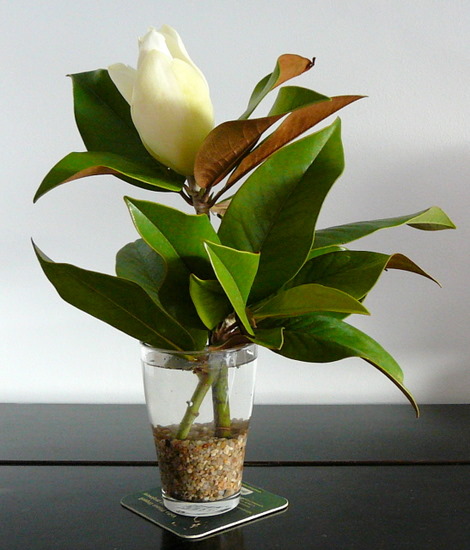
Soon the petals open and in a few days become brown and fall. Every day I went to watch the tree to see how they changed, like some lights that appear out of the blue, emitting a white light and fragrance for some days and then vanish. Egoist as I am, I cut he last one that blossomed to have it near me. Now I’ll have to wait until next year hoping that the tree will blossom again.
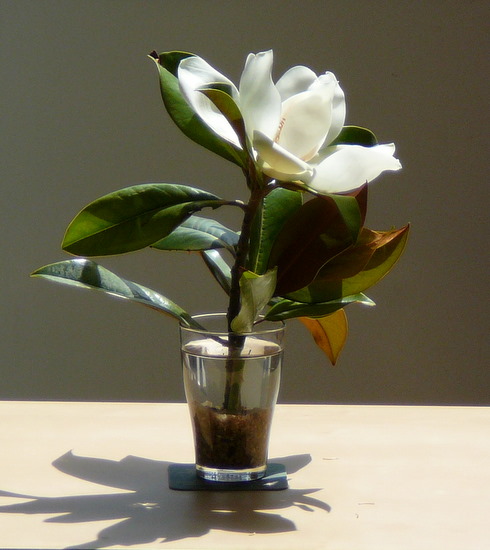
Pictures can give an idea about this white. But how could I describe the scent? A mix of floral fragrance, a touch of lemon and an echo of green grass and forest.
There is a famous story about an indian prince that ordered a pavilion to be built in the middle of a forest of magnolia trees in the huge garden of his father the maharaja, so that he would move to live there when the blossom season would arrive. He was about to die of starvation because, when servants brought him the most delicate food he could not stand any other smell than the fragrance of magnolia flowers. Fortunately, the blossom season didn’t last long and he could survive with just water and hazelnuts. And so he went on, every year, moving to the magnolia pavilion and refusing food while he would have those white flowers around.
There is also the story of a noble russian lady that became blind and, to avoid depression requested a new fresh petal of magnolia flower every day. So, during the blossom season, gardeners would cut the flowers just after they opened, wrapped the 9 petals of each one in silk cloths and stored them in ice.
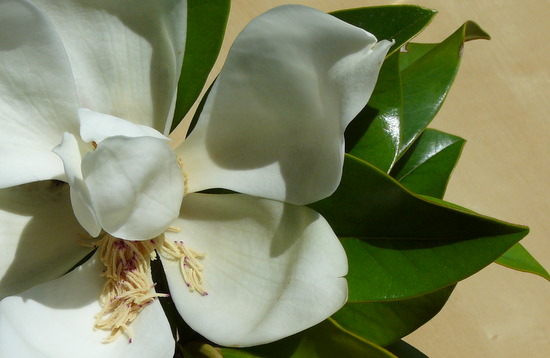
PD: I’ve just made up those stories but they could have been true.
If there are spiritual needs, can they be formulated as a right?
In the Universal Declaration of Human Rights, most of the articles point to very basic issues. Those that go a bit beyond are article (24): “Everyone has the right torest and leisure, including reasonable limitation of working hours and periodicholidays with pay”. An also article (27): “Everyone has the right freely to participate in the cultural life of the community, to enjoy the arts and to share in scientific advancement and its benefits.”
This is very similar to what we can find in theConvention on the rights of the Child, article 31: “1. States Parties recognize the right of the child to rest and leisure, to engage in play and recreational activities appropriate to the age of the child and to participate freely in cultural life and the arts. 2. States Parties shall respect and promote the right of the child to participate fully in cultural and artistic life and shall encourage the provision of appropriate and equal opportunities for cultural, artistic, recreational and leisure activity.” In the first part of article 29 there is an eco of Maslow ideas: “States parties States Parties agree that the education of the child shall be directed to the development of the child’s personality, talents and mental and physical abilities to their fullest potential”.
I remember a paper about children’s spiritual rights/needs from Fundació Jaume Bofill (can’t get the reference) where the following features where suggested as belonging to spiritual life:
(1) Wonder and awe
(2) personal experience of joy
(3) experience a feeling of inner serenity
(4) to be aware of the relations and links with other beings and things
Lately I’ve been fortunate enough to fulfil all the aspects of spiritual life:
(1) On Sunday morning I was in wonder and awe when I discovered that out of an acorn, apparently inactive during a whole year, a little cork tree had sprouted.
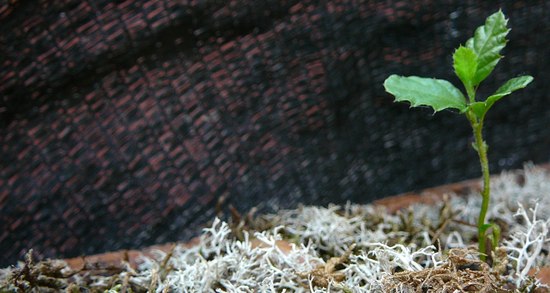
(2) I had lentils for lunch and, so they were so tasty that I had a rapture of intensejoy. Ah! how can life be so enjoyable?

(3) Lentils were responsible not only for the state of intense joy, but they led me to a nice easy nap. When I woke up, I stayed in bed, breathing slowly, looking at the blue rectangle of sky limited by the window. I experienced a profound inner serenity.

(4) While looking at this blue rectangle, I saw swallows crossing, flying happily. Shrieking. I thought of all the springs I’ve seen them come back, the place where they spend winter in, how would look Barcelona seen from above, all the other people in the world that in this precise moment where staring at flying swallows. I remembered the picture “Bird in space” by Joan Miró at the Reina Sofia Museum which captures in two perfect strokes the fly of a bird in space. And all this together made me feel aware of the connections with all kind of beings.
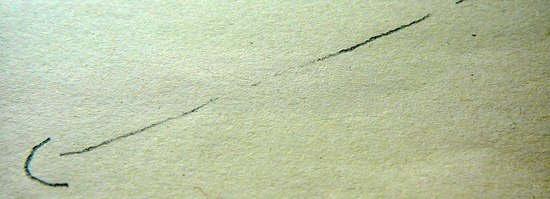
Drought imposes restrictions on water consumption and I have suspended automatic watering in the terrace. My emergency plan consists in:
I hope this will be enough to keep alive wonders like:
new shoots in a rose
cherry blossom
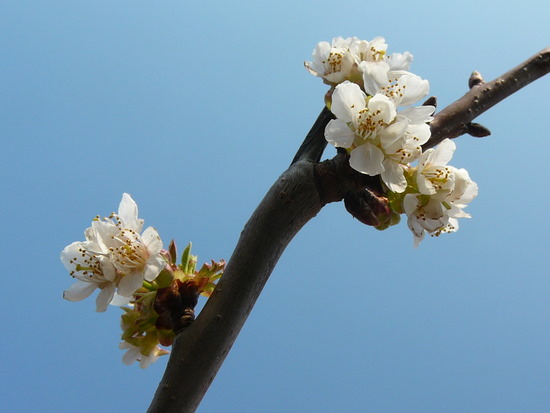
rock rose (cistus albidus)

topped lavender (Lavandula stoechas)

That, in collaboration with a lost swallow, announce, just in case I hadn’t realised yet, that spring is here.